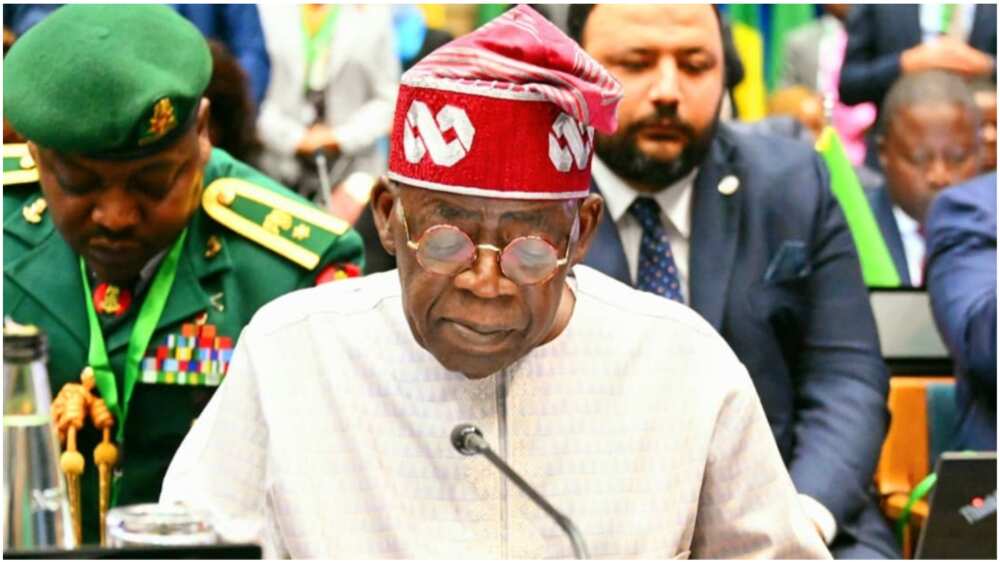Tasks before Tinubu on extended Nigeria’s maritime areas
It is no longer news that the United Nations Commission on the Limits of the Continental Shelf has granted the long-sought approval to the request for the extension of Nigeria’s maritime territory beyond 200M (200 nautical miles). Accordingly, the approved (extended and gained) area has become part of the sovereign territory of Nigeria which the […]

President Bola Ahmed Tinubu
It is no longer news that the United Nations Commission on the Limits of the Continental Shelf has granted the long-sought approval to the request for the extension of Nigeria’s maritime territory beyond 200M (200 nautical miles).
Accordingly, the approved (extended and gained) area has become part of the sovereign territory of Nigeria which the country shall exercise the right thereof for the purposes of; among other things, exploring and exploiting the natural resources.
The development, by implication, means that Nigeria has to redraw the map of its sovereign territory in the Gulf of Guinea to accommodate the new area gained in a location known to contain abundant carbon and marine solid resources.
It is an axiomatic fact that the New York-based High-powered Presidential Committee saddled with the responsibility of the extensions of Nigeria’s Continental Shelf has selflessly carried out rigorous and vigorous patriotic assignment. The fruit of which will be enjoyed by generations unborn.
For sure, this is a remarkable milestone for the Renewed Hope Agenda of the Tinubu Administration that will boost the economic fortunes of the country immensely.
Determined to gain additional maritime territory in accordance with the provisions of Article 76 of the United Nation’s Convention on the Law of the Sea, on May 7, 2009, Nigeria made an application to the Secretary General of the United Nations through the Commission on the Limits of the Continental Shelf for an extension of its continental shelf.
Article 76 of the United Nations Commission on the Limits of the Continental Shelf (UNCLOS) provides that any coastal state that intends to submit a claim for an extended continental shelf must do so within ten years from the date it signed the Convention or forfeit such a right forever.
In a statement dated September 8, 2023, the Chairman of the United Nations Commission on the Limits of the Continental Shelf, Mr Adnan Rashid Nasser Al-Azri, confirmed “the approval of two sets of recommendations with regard to the submissions made by Nigeria and the Russian Federation, respectively”.
No doubt, attaining to this stand in the process requires a high degree of expertise using the science of geology, geophysics, geodesy and hydrography.
For instance, Article 76 of the United Nations Convention on the Law of the Sea provides that a littoral State is entitled to make a claim for an extension of its maritime territory from the traditional 200M, up to a maximum of 350 nautical miles (350M).
However, this is contingent upon the ability to prove that the subsoil and seabed of the submarine areas at the distance claimed are natural prolongations of its land territory.
Proving this involves very methodical and scientific analyses of huge geophysical/geological, hydrographic and geodetic data collected in the area of claim and mapping of the continental margin in accordance with the guidelines of the United Nations Commission on the Limits of the Continental Shelf (CLCS).
Essential requirements for this included an in-depth scientific understanding of the regional geology/geophysics, including the general characteristics and peculiar features of the region, knowledge of the configuration of the coast, sea bottom, and a comprehensive knowledge of the geology of the ocean basin.
In addition to demonstration of convincing proofs on the composition and structure of the subsurface to the basement and the type or types of basement.
Thereafter, the United Nations Commission on the Limits of the Continental Shelf (CLCS) thoroughly examines the submissions from countries and proceeds with interactions between the submitting coastal State and the Sub-commission, which continues during the entire consideration of the submission.
The interactions consist of question-and-answer sessions and presentations by both the Subcommission and the submitting State, until such a time that the subcommission is satisfied that the country has proved its case, and then approval is given.
However, all the information Nigerians are getting on this is only from the media, as we have yet to hear from the government. Our scientists will certainly agree that when you are speaking of an area that has been ‘gained’, there is a need to know the location of the area and how big the area is, and this can only come from government, to whom the United Nations would have communicated to.
So far neither the Presidency nor the National Assembly is either confirming or denying this great achievement that has never happened in the history of our great country.
To swiftly consolidate this triumph without being lethargic, it is necessary for Nigerians to hear from the authorities who should tell Nigerians the good news and also give an expository account of the nitty-gritty of the ‘additional area’, as well as other relevant benefits Nigeria stands to derive from the gain before any celebrations can begin.
It is time for Nigeria to go through all the legal instrumentation that is needed by the United Nations as early as possible, to take possession of the area. We trust that a report of this monumental victory will not end as document put in archives and libraries only to be read as history.
Akin-Olu sent this piece from Abuja
